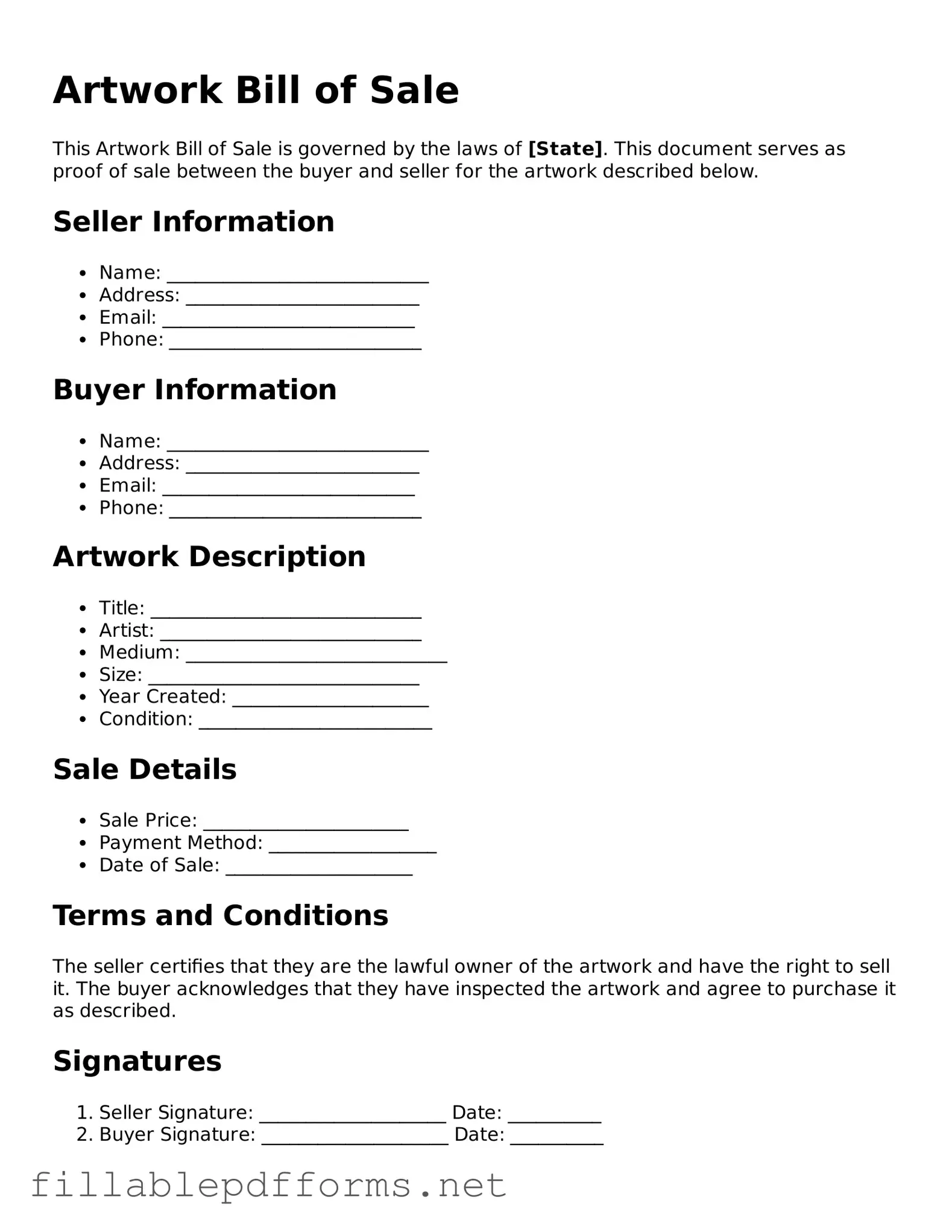The Artwork Bill of Sale form serves as a crucial document in the art world, facilitating the transfer of ownership from the seller to the buyer. This form typically includes essential details such as the names and contact information of both parties, a description of the artwork being sold, and the agreed-upon sale price. Additionally, it may outline any warranties or representations made by the seller regarding the authenticity and condition of the artwork. By providing a clear record of the transaction, the Artwork Bill of Sale helps protect both the buyer and the seller, ensuring that all parties understand the terms of the sale. Furthermore, this document can be invaluable for future reference, especially if questions about ownership or authenticity arise later on. Overall, the Artwork Bill of Sale is not just a simple receipt; it plays a vital role in establishing legal rights and responsibilities in the art market.
